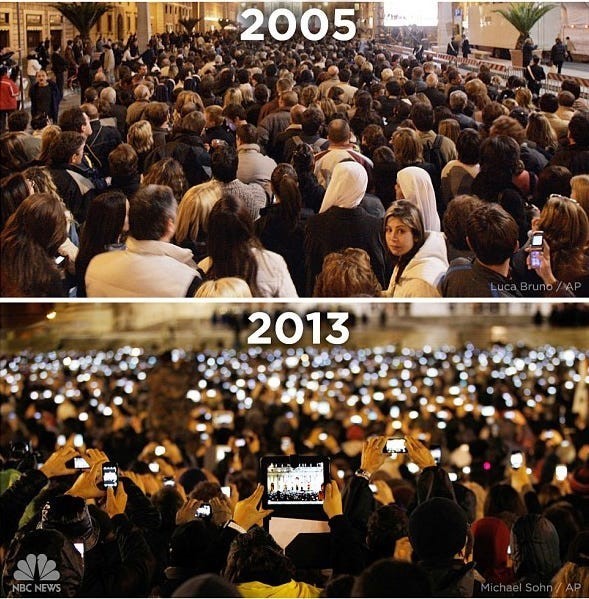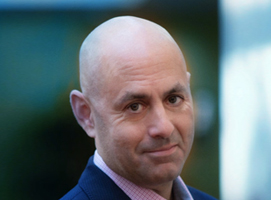fundraising
Donor Engagement Is Changing. Are You?
Successful engagement with alumni and donors is undergoing a transformational shift. The shift involves a change in preference by alumni in how they maintain their connection with their alma mater. Led by our youngest alumni, the donors of tomorrow will increasingly interact with institutions online, primarily via a smartphone or mobile device. It’s time to change how we engage with our supporters. Colleges and universities that adopt a fresh approach to engagement will emerge with more donors, financial strength, and thriving communities of alumni from all generations.
The online shift is happening faster than we think it is.
We may not feel the need to shift now, particularly since charitable giving to US higher ed increased by 6.1 percent and nearly reached $50 billion in 2019. Viewed through a narrow lens, traditional fundraising techniques may seem adequate, because big money is coming in as older donors distribute wealth.
Yet, if we widen the view and consider the world outside of higher ed fundraising, the pace of change is staggering:
- The iPhone was first introduced in 2007. As of 2019, 81 percent of Americans own a smartphone, up from 35 percent in 2011, according to the Pew Research Center.
- We’ve fundamentally changed how we shop. Amazon went public as an online book seller in 1997. Since then, the online retailer has disrupted retail in general, as well as many other industries. As of 2019, Consumer Intelligence Research Partners (CIRP) estimates that 82 percent of American households have at least one Amazon Prime account.
- Online tools help us maintain connections. Facebook, once limited to university students, opened to everyone in late 2006, eventually surpassing 1 billion monthly active users in 2012. According to eMarketer, 90.4 percent of Millennials, 77.5 percent of Generation X, and 48.2 percent of Baby Boomers are active social media users.
In a little over 10 years, we have moved everything online. We are always online, we transact online, and we build and maintain relationships online. Entire industries have been disrupted, and once unassailable companies have been eclipsed by digital natives. In 1997, the most valuable companies in the world were General Electric, Royal Dutch Shell, Microsoft, Exxon Mobil, and Coca-Cola. In 2017, they were Apple, Google, Microsoft, Amazon, and Facebook.

In the midst of this societal transformation, advancement professionals have been able to maintain traditional approaches to donor engagement. But change will come quickly. As we said based on our 2020 National Young Alumni Survey, institutions must begin now “to engage with young alumni on the terms they demand and deserve.”
To thrive during the transformation shift to online engagement, focus on meaningful connections.
For better or for worse, companies have helped to shape what we all expect from a meaningful relationship with an organization. Advancement professionals can learn from the experience of companies and their use of technology in maintaining B2C relationships. For example:
- As consumers, we expect organizations to anticipate our needs and respond quickly.
- We expect to be treated as individuals, even if that means that organizations need to figure out how to personalize at scale.
- We want to connect with organizations the same way that we connect with our friends: online, at any time, but available when we need to meet face-to-face.
Note that these expectations deal with real human connections, not connections with technology. We are addicted to our smartphones, because we want authentic connection with other people. When we understand what people really need, we can harness technology to forge meaningful ties with alumni.
People crave authentic personal connections.
Regardless of the technology or medium of communication, connection remains a deep-seated human need. Eighty-two percent of young alumni who give feel very connected to their alma mater, yet only 21 percent of young alums overall feel very connected.
The strongest connections are forged by peer relationships rather than relationships with authority figures, and by relationships with people rather than relationships with institutions. In other words, I’ll give when my friends give, and I’ll give when I think it helps real people. Consider the number of times you’ve checked out a playlist from a friend or family member on Spotify, or how many times you’ve asked your friends about a good restaurant, movie, or show. Real-time, authentic social connection drives our behavior every day.
Focus on the change that your donors want to see in the world.
Young alumni make gifts with the right inspiration. Some inspiration doesn’t change much from generation to generation: over the years, donors have given to colleges and universities to help others get the opportunity that they received. Financial aid remains a strong interest for all donors.
However, young alumni tend to be more mission-driven than their older counterparts, and young alumni are more ready to support another cause—like environmental or social justice causes—if they develop a stronger emotional connection with this other issue or if they lose trust in their college or university. Failing to focus on your donors’ interests, losing connection over time, or squandering good will comes at a tremendous price.
Attention is your competition.
Finally, we tend to think it’s simply too hard to keep the attention of alumni online. There is certainly lots of content that competes for their attention. The key to keeping top of mind is showing you are concerned enough to be relevant to them. Do you share content that—from your audience’s perspective—is relevant to their interests? Does your content change as their interests evolve? Do you engage with them online with the appropriate etiquette for calling, texting, and interacting on social media?
The new engagement realities require technology and integration.
Much of the way donor engagement is changing revolves around how we use technology. Harnessing technology to strengthen bonds with alumni, requires applying specific technology trends to your engagement strategy.
- Artificial Intelligence (AI) is a force multiplier. In many ways, AI enables us to return to the traditional way of doing business before mass-market, broadcast marketing became the norm. With a traditional approach, people know other people: a shopkeeper knows his/her customers and provides personalized service based on this knowledge. Fortunately, we still have gift officers, so we have a model for personal interaction. What we don’t have is enough intelligence, or AI, to augment the work of gift officers and expand our reach in a personalized way. In other words, AI cannot be a check-box item: practical use of AI focuses on using intelligence to interact with people authentically.
- Silos and systems of record are giving way to connectedness and systems of engagement. For many years, we’ve used systems of record, such as SIS, CRM, and financial software to automate core functions: managing student records, donors and potential donors, donations, etc. Functional automation made sense then because these applications delivered productivity gains over general-purpose software and manual recordkeeping. The problem is that these legacy systems don’t equip us to improve engagement. Why? Systems of record don’t focus on the alumni experience as the end result. They don’t integrate well with other systems, particularly other functional silos. That’s why institutions are demanding new engagement capabilities and easier ways to integrate systems. As you invest in engagement, keep in mind that preferences for alumni experience changes quickly, so flexibility and breadth are important.
- Content needs to be specific and meaningful. When competing for attention, you need to reach each person with specific, high priority topics. As consumers, we know what happens to poorly targeted emails: we put them in the junk folder. We might even get angry with even well-intentioned, repeated misses. Similarly, young alumni prefer giving to causes that make a difference to them. After all, the feeling that alumni call their “college experience” was created by a string of specific relationships and experiences: meeting lifetime friends, learning new life lessons, finding direction from a gifted teacher. Continuing the relationship with former students requires caring enough about the ongoing dialogue to stay relevant to their lives and what they care about. Fortunately, colleges and universities have a rich source of content, if they use technology to re-use and package what institutions already produce.
- Content needs to be shared at the right time and in the right place. “Omnichannel” is not using many different channels. It means conducting a dialogue in the appropriate time and place so that the alum feels like s/he is having a coherent conversation with you, regardless of channel or time. If you mail, call, and text someone, you must be aware that you contacted the person in these ways. If someone responds to online Giving Day, don’t send that careless, annoying email asking them to donate before it’s too late.
It’s not just about young alumni. It’s about the future.
The realities of 21st century engagement cross generations, and we can learn a lot about how successful businesses have engaged consumers. Changing the way we think about engagement, breaking down internal barriers to taking this leap, and implementing technology to personalize at scale is crucial. That’s what will transform donor engagement, and the time is now to make it happen.
Let’s talk about how donor engagement is changing and the future of fundraising: young alumni philanthropy, digital engagement, and how to tap into the philanthropic spirit of donors of all ages. Contact us today and we’ll set up a time to talk with our fundraising experts.
